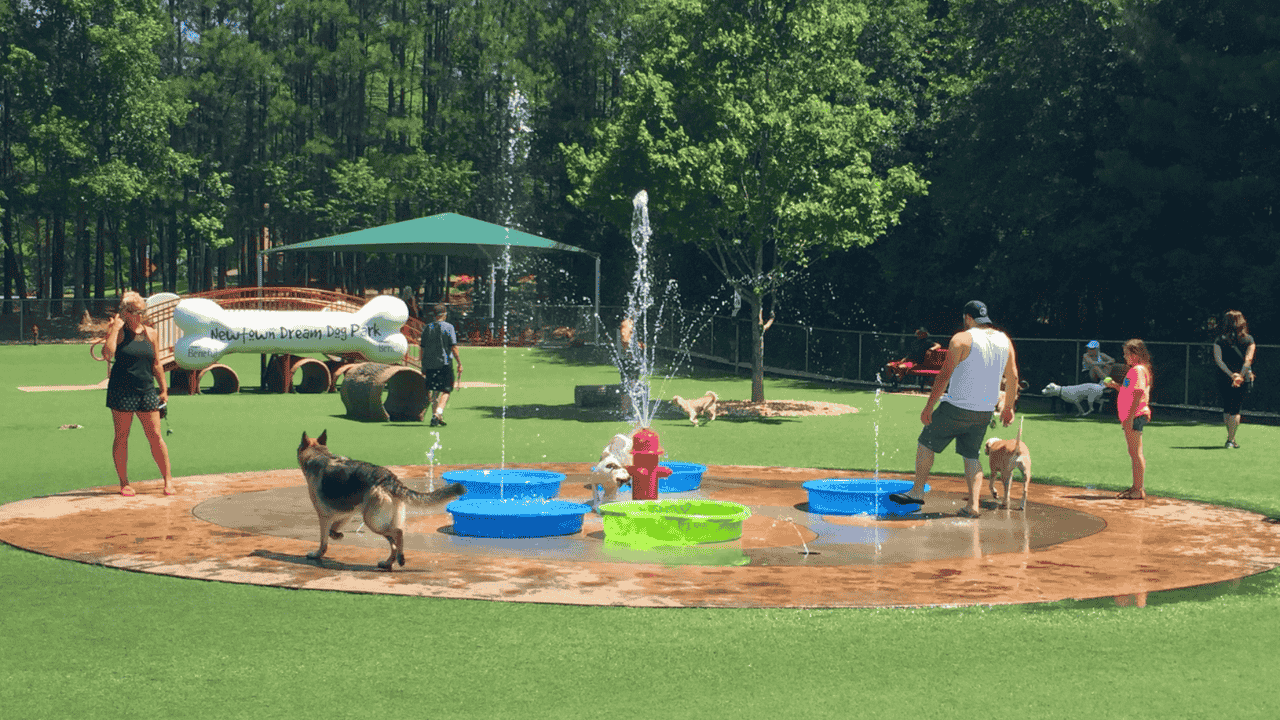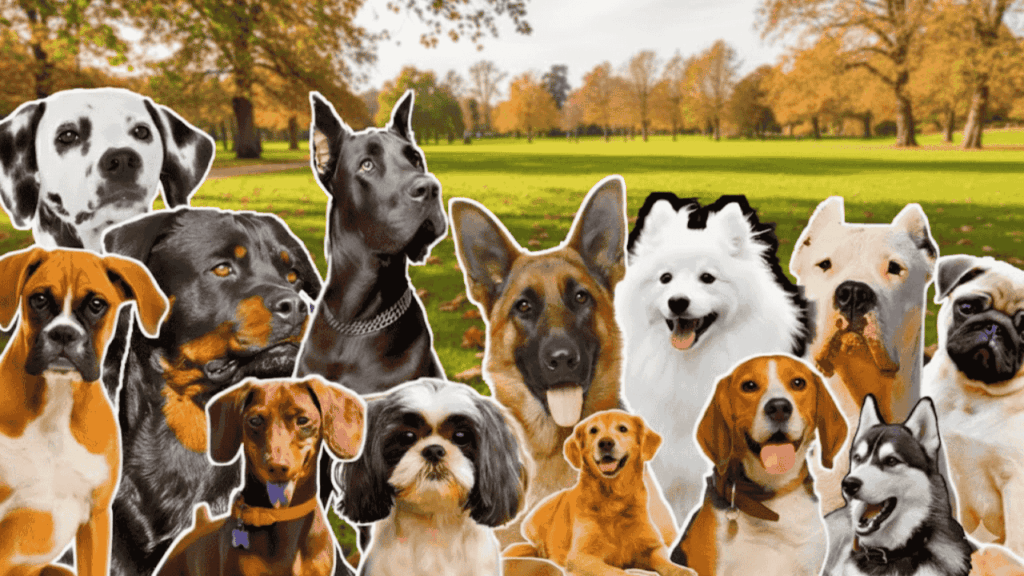Over the past decade, dog parks have become essential spaces for pet owners across the United States. As urban living and busy lifestyles limit access to private yards, dedicated dog-friendly areas provide a safe and stimulating environment for dogs to socialize, exercise, and explore. These parks are more than just open spaces; they are hubs for community engagement, pet enrichment, and responsible dog ownership.
Dog parks reflect a broader shift in how Americans approach pet care. Owners are increasingly focused on holistic wellness, recognizing that dogs need physical exercise, mental stimulation, and social interaction to thrive. Visiting a dog park allows dogs to release energy, practice social skills, and maintain overall health, complementing home routines, structured feeding, and preventive wellness practices.
What Makes a Dog Park Great
Not all dog parks are created equal. A high-quality dog park combines safety, accessibility, and amenities to provide an enriching experience for pets and their owners. Essential features include secure fencing, separate areas for small and large dogs, and ample space for running and play. Shade, water stations, and waste disposal facilities also contribute to a comfortable and sanitary environment.
Equally important is the park’s design, which encourages exploration and natural behavior. Trails, agility equipment, tunnels, and varied terrain engage dogs’ minds and bodies, offering more than just an open field. Many of the best parks also host events, training sessions, and social activities, fostering a sense of community among pet owners while supporting responsible pet behavior.
Regional Favorites Across the Country
From coast to coast, several dog parks have earned reputations for excellence. In the Northeast, New York City’s Central Park off-leash areas offer sprawling green spaces and scenic trails for dogs to explore. Boston’s Peter’s Park combines agility courses and water features, providing mental and physical stimulation for dogs of all sizes.
On the West Coast, California shines with innovative dog parks. Los Angeles’ Runyon Canyon and San Diego’s Balboa Park include off-leash trails and expansive play areas, allowing dogs to enjoy nature alongside their owners. The Pacific Northwest offers Rainier Dog Park in Seattle, known for its wooded trails and open meadows that keep dogs engaged for hours.
The Midwest boasts parks like Chicago’s Montrose Dog Beach, where dogs can swim, socialize, and enjoy sandy shorelines, and Minneapolis’ Bryant Lake Regional Park, offering both open fields and wooded areas for exploration. In the South, Austin’s Zilker Metropolitan Park and Atlanta’s Piedmont Park provide extensive off-leash areas with shaded spots, water fountains, and agility equipment for active play.
Benefits of Visiting Dog Parks
Regular visits to dog parks offer a wide range of benefits. Physically, dogs get essential exercise, which supports healthy weight, strong muscles, and cardiovascular fitness. Running, chasing, and climbing help expend energy in a safe environment, reducing behavioral issues at home, such as excessive barking or destructive chewing.
Mental stimulation is another key benefit. Dog parks introduce new scents, sights, and interactions that keep a dog’s mind sharp and engaged. Socialization is equally important, as interacting with other dogs and humans strengthens communication skills, confidence, and emotional resilience. For puppies, early exposure to diverse environments and companions is critical for proper behavioral development.
Dog parks also support holistic wellness for owners. They encourage outdoor activity, provide social opportunities with fellow pet lovers, and offer a stress-relieving routine. The combination of exercise, fresh air, and community interaction enhances overall well-being for both pets and people.
Safety and Etiquette Tips
To maximize enjoyment and safety at dog parks, pet owners should follow basic etiquette and guidelines. Ensuring dogs are up to date on vaccinations and free from contagious illnesses protects all visitors. Monitoring behavior, cleaning up waste promptly, and supervising interactions helps prevent accidents and conflicts.
Understanding the park’s rules, such as leash requirements or designated play areas for different dog sizes, is essential. Owners should also gradually introduce their dogs to the park environment, particularly if their pets are shy or reactive. Bringing water and treats, along with toys for safe play, ensures a positive and engaging experience.
Combining Dog Parks with Holistic Wellness
Dog parks fit seamlessly into a holistic approach to pet care. Regular play sessions complement structured routines like controlled feeding, preventive health care, and mental enrichment. Exercise at the park supports cardiovascular health, muscle tone, and joint flexibility, while social interactions contribute to emotional balance.
For owners using smart feeders or following specialized diets, park visits provide the perfect outlet for energy, ensuring pets maintain a healthy weight and balanced lifestyle. Agility courses and interactive spaces also stimulate problem-solving and coordination, supporting cognitive development alongside physical fitness.
Community and Social Benefits
Dog parks foster more than physical and mental wellness; they cultivate community connections. Pet owners often share advice, organize events, and support local initiatives, creating a network of responsible, engaged dog enthusiasts. This social dimension enhances the park experience, promoting safer, more enjoyable interactions for everyone.
Many parks also host educational programs, obedience classes, and wellness workshops, integrating knowledge with recreation. These opportunities align with the broader trend toward proactive and preventive pet care, helping owners maintain their dog’s health while fostering responsible ownership practices.
The Future of Dog Parks in the USA
As dog ownership continues to grow, the demand for well-designed, innovative dog parks is likely to increase. Cities are investing in multi-use parks, agility trails, and interactive features to meet the needs of diverse breeds and sizes. Technology integration, such as app-based park maps, real-time occupancy updates, and event notifications, is also enhancing the user experience.
In addition, a focus on sustainability and eco-friendly design is becoming more common. Parks are incorporating native landscaping, shaded rest areas, and safe waste disposal systems, ensuring long-term environmental and community benefits. This evolution reflects a holistic view of pet care, combining recreation, wellness, and responsible stewardship.
Creating a Routine Around Dog Parks
Integrating dog park visits into a pet’s routine supports consistent health and wellness outcomes. Regular trips, combined with proper diet, smart feeding practices, and preventive care, create a balanced lifestyle that benefits dogs physically, mentally, and emotionally. Owners who establish consistent park routines often see improvements in behavior, energy levels, and social skills.
Ultimately, dog parks are not just recreational spaces—they are essential components of modern dog care. They offer opportunities for exercise, enrichment, and social interaction while supporting a holistic, health-focused approach to pet wellness.
A New Standard in Dog Care
Dog parks have evolved from simple open fields to dynamic spaces that enhance the lives of pets and their owners. By providing exercise, socialization, and mental stimulation, these parks complement modern pet care practices, including holistic wellness, smart feeding, and preventive health routines.
For dog owners seeking to improve their pet’s quality of life, exploring the best dog parks across the USA offers an opportunity to combine recreation, community, and responsible care. These spaces are transforming the pet care landscape, ensuring that dogs can play, explore, and thrive in safe, engaging, and thoughtfully designed environments.







